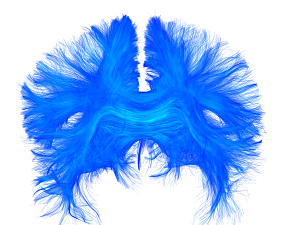The presence of neurological soft signs (NSS) in children and adolescents—minor deviations from the norm in motor performance and sensory-motor integration—appears to be an unspecific but sensitive marker of atypical neurodevelopment.
Researchers at Brigham and Women’s Hospital are using neuroimaging to explore the structure–function relationship of NSS. Inga K. Koerte, MD, PhD, of the Psychiatry Neuroimaging Laboratory and the Brigham Department of Psychiatry, and colleagues report in Cerebral Cortex that NSS in typically developing adolescents are associated with distinct alterations in brain structure that can be objectively quantified using neuroimaging.
Methods
Dr. Koerte and colleagues previously conducted the longitudinal REPIMPACT study (Repetitive Subconcussive Head Impacts—Brain Alterations and Clinical Consequences). Young male athletes (ages 13–16) were recruited between July 2017 and April 2020 at three European study sites.
The sample in this analysis included 136 REPIMPACT participants. They underwent a standardized pediatric neurological examination performed using the Minor Neurological Dysfunction (MND) framework, which considers developmental status and assesses performance for age.
28 tests in the MND framework were grouped into six clusters: fine motor skills, coordination and balance, posture and tone, involuntary movements, associated movements, and sensory function. Participants also underwent T1- and diffusion-weighted MRI.
Neurological Results
A participant was categorized as being NSS+ if their performance was non-optimal on at least one of the six clusters:
- 111 (82%) participants performed optimally in all clusters (“NSS− group”)
- 25 (~18%) performed non-optimally in at least 1 cluster (“NSS+ group”)
Imaging Results
The MRI data showed:
- Cortical volume and cortical thickness did not differ significantly between the NSS+ and NSS− groups
- Local gyrification (cortical folding) was significantly greater in the NSS+ group in the left superior frontal and parietal areas
- White matter microstructure was altered in the NSS+ group in widespread clusters spanning tracts that have a major role in motor functioning
Future Directions
Two hallmark processes of adolescent brain maturation are synaptic pruning (in which unnecessary connections are eliminated) and the development of white matter myelination, which ensures fast information processing. They are potential mechanisms for the structure–function relationship in NSS.
The insights from this study may pave the way for an objective longitudinal assessment of brain structure and NSS from childhood to young adulthood, including associations between NSS and comorbidities such as autism spectrum disorder, attention deficit hyperactivity disorder, developmental coordination disorder, and psychosis.
